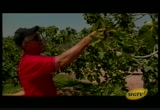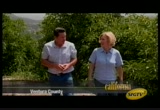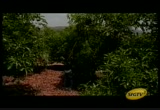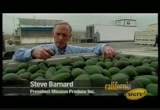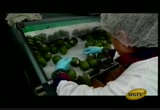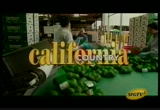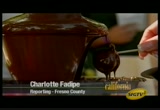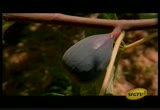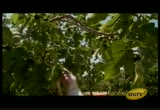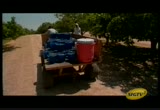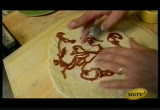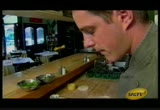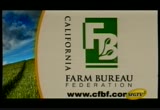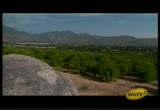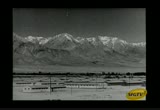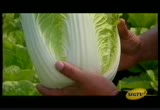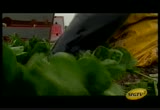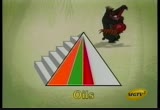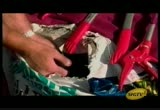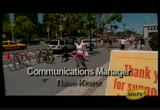tv [untitled] September 21, 2010 7:00am-7:30am PST
8:00 am
i've bfifty-six ys!r years! i've been in long-term recovery for 23 years. i've been in recovery for six months and love it! i've been in recovery for over 15 years! every september, people gather all across the country to celebrate recovery from addiction. i am so grateful for 19 years of recovery. it's changed my life, changed my children's lives. for information or for events near you, visit recoverymonth.gov get involved and join the voices for recovery.
8:01 am
>> coming up on "california country," find out why being called an avocado head is actually a good thing for these folks. then, they're getting figgy with it in fresno. and have questions on what to grow in your garden? never fear, our expert has the answers. it's all ahead, and it starts now. [captioning made possible by california farm bureau federation] creamy, rich, and decadent, avocados have become a staple for many of us. according to the california avocado commission, about 43% of all u.s. households buy avocados regularly now. so when you think of avocados, you probably think of this,
8:02 am
right? guacamole. but today farmers and chefs are proving that avocados can be so much more. good. ok, sure, what's not to like about guacamole? i mean, we do eat a lot of it. in fact, more than 49 million pounds of avocados in the form of guacamole will be consumed on super bowl sunday alone. but at hawks restaurant in granite bay, they're exploring different ways to use the alligator pear, otherwise known as an avocado. >> we like using california avocados because they're grown as close as an avocado can be. these are from the simi valley. they're really versatile. they're rich. as you can see, we puree them. we serve them somewhat chunky. we can wrap things in them. they're just real versatile. and they're tasty. >> but chefs like michael are
8:03 am
just part of the equation of educating consumers on the many fabulous attributes of avocados. the real groundwork begins just there, on the ground of the 6,000 farmers across the state who now grow avocados. california farmers produce about 90% of the nation's total avocado crop, and that includes farmers like mark and linda bruce of simi valley in ventura country. not from a farming background and surrounded by a huge housing development, the couple really didn't know what to do with all of the lush land they had when they bought the property back in 2000. >> because we'd always talked about having a ranch, mark and i had talked about it, we did not know what that meant. but that was our--i guess it was a dream, but didn't have any idea how it was going to evolve. and then one day, this is where we were. >> a friend of ours said, hey, this looks like good avocado property. and not knowing anything about avocados other than that's what i put on my tacos, i said, oh, sure, let's
8:04 am
do avocados. >> so the couple learned as they went along, everything from soil science to irrigation techniques. and before they knew it, they had developed a thriving avocado orchard along the way. they now have 8,500 avocado trees, trees that have come to mean more to the couple than they ever could have imagined. >> we like to think that we have 8,500 employees working for us here at the facility on our area. and we like to think of every tree as really an individual with its own personality. >> my husband calls them employees, but they're kind of like my babies. and anytime anything happens to them we feel horrible. and you see when a tree is stressed and you have to take care of it. and if any of them die, you feel bad. you feel really bad. so you want to take care of them as best you can. >> and those 8,500 employees
8:05 am
continue to work hard for linda and mark who continue to dote on them. they hope to harvest about 15,000 pounds of fruit per acre this season alone. each avocado is handpicked, making sure the stem is trimmed off so it doesn't scrape or bruise other avocados when it is packed. and then the fruit is driven here to mission produce in nearby oxnard. >> well, these were just harvested today. they--they were brought by the growers right down the street here, so it's probably the first lot in today. it's one of probably 80, 75 or 80 lots that will come in. and a lot will be anywhere from, oh, 10 to 100 bins depending on the size of the grower. [man vocalizing] >> here they are processing upwards of 650,000 pounds of fruit a day and shipping it across the country and the world as well. in fact, these avocados
8:06 am
most likely will end up in grocery stores, club stores, and restaurants near you perfectly ripe just a few days after harvest. >> what this is, this is what we call a riping room. it'll hold about 20 pallets, which is a truckload. and we'll put food in here that's at about 40 degrees. we'll raise the temperature to the low sixties. we'll add some heat. >> and steve says they've steadily seen an increase in avocado consumption. on average, each american now consumes about 3 avocados per year. but steve thinks that will increase to 5 or 6 avocados within the next couple of years. so whether you try avocados in guacamole at your next party or try them to support farmers like the bruces, the time is indeed ripe to try some california avocados today. for "california country," i'm tracy sellers.
8:07 am
8:09 am
>> welcome back to "california country," the show that takes you on an all-expense paid trip to experience the best-kept secrets of the golden state. >> it's easy to see just how popular chocolate-covered figs are. although the fig ice cream was also a big hit with people. >> um, the consistency, it's creamier. and it's just very palatable. just excellent. >> and they were saying the same thing about the fig syrups served with roasted lamb. >> mmm. that's wonderful. >> in fact, everywhere you went at this year's fresno fig festival, there were hundreds of people and artisan food companies all cooking or eating the succulent fruit.
8:10 am
some were trying it in different combinations for the first time. >> but also with the blue cheese wrapped in prosciutto on the grill. >> it's music to the ears of paul mesple and other california fig growers. his grandparents emigrated here from france before world war i and decided to start growing figs and grapes in the central valley. it's been a family business ever since. >> and as my grandfather and then his children--my father and my uncles--saw how figs were doing, we planted more and more figs. so, we became almost exclusively fig farmers in the late sixties and through the seventies. and when the city encroached on our property in fresno, we came up here to madera county. and we planted mostly figs and a few almonds to continue the tradition. >> paul's a member of the valley fig grower's association, which is celebrating its 50th anniversary. he says this sixth annual fresno fig festival is a great way to reach new customers and show them there's more to figs than the fig newton
8:11 am
cookie. >> very nice to see you. >> shoot, i better buy a small box. >> you got it? right there. $6. >> 4 different types of figs grow in california, but the dark purple mission fig and the amber-colored calimyrna fig are by far the most prevalent. paul grows both. 2/3 of his 550 acres are dedicatedto figs, the remainder to walnuts. harvest season of these mission figs will last until about november. paul says determining when a fig is ripe is a matter of texture. >> this is the ideal type of fig you want to pick here. see how it's starting--it's just starting to soften? it's full color. >> paul studied political science at uc berkeley and briefly considered becing a politician, but he soon found the allure of working on the land irresistible. this third generation farmer insists the world's best figs are grown right here in california's central valley. >> i think a lot of the chefs, many you saw today at the fig fest, really have taken on figs
8:12 am
as a product they can really work with in their restaurants. it's a new--it's an old product that's new again. it kind of has that exotic, kind of mysterious reputation now. it's very good. people are trying to start using it in different applications. i think it's going well. >> some of the figs will be sold locally at farmers markets and other market stands. but most are being packed to be shipped tohe east coast--places like new york, chicago, and philadelphia, where there's a diverse ethnic population. california is a world leader when it comes to dried figs, providing about 20% of the world's figs. the golden state normally produces about 22 million pounds of dried figs every year and about half as much fresh figs. >> it's a very versatile fruit. it can be used in cooking. it can be used in pastries. it works with savory foods. it works very well with cheese. >> he says california's unusual weather this year, a late spring and above-average temperatures, has not affected the quality of california figs. in fact, he's
8:13 am
got a bumper crop this year. although we think of a fig as being a fruit, scientists say figs are, in actual fact, an inverted flower. and the seeds inside--well, that's the real fruit. well, fruit or flower, one thing's for certain, figs are growing in popularity because they are so delicious and nutritious. back at the fig festival, marie simmons was signing autographs on her ndw fig cookbook. the california fig advisory board says fresh fig consumption has increased by about 60% as a new generation discovers that each fruit is a bundle of goodness. >> they also are very high in b vitamins, and, of course, they have potassium, which most fruit does. but they're--of all fruits, they're right up there at the top with nutritional value. >> the chefs who were serving fig bread pudding were raving over how versatile figs are to cook with. >> so, from my end, they add texture, color, and just a very subtle flavoring. >> figs are believed to be one
8:14 am
of the earliest fruits in the world, and were introduced to america around the 1500s. >> and our real goal, though, is now to spread out the demand, introduce more people to figs, fresh figs especially, to get a new group interested in such a, you know, fabulously healthy fruit. >> and judging by all of the peop who came to the fig festival, thousands of california figs will be enjoyed by generations to come. charlotte fadipe, "california country tv." >> hi. my name is john toulze. i'm the executive chef of the girl and the fig and the fig cafe. and today, we're going to be using our fresh figs and making a grilled fig pizza with prosciutto and point reyes blue. and part of what i like about pizza and rustic is that those pizzas--is that they're not perfectly round. so if yours isn't perfectly round, you don't have to worry about it. and then just kind of squeeze the edges. we do this--i do this at home sometimes with my daughter and
8:15 am
just go ahead and make pizza. it's a great thing. and then anybody can put anything they want on it. i'm just gonna lightly coat the outside... of the pizza dough. and then we're gonna go ahead and put on our ingredients. we'll start with some grilled red onions. we throw a little bit of olive oil and balsamic on these before we grill them. again, too, we don't really heavily laden our pizzas with a lot of ingredients. like it light and thin. from there, we're gonna go ahead and throw on some figs, and these are some beautiful, fresh black mission figs we have. and we'll slice some circles with them. again, you could quarter them if you'd like. now, the most important thing with prosciutto is obviously get a high-quality prosciutto, and make sure you get it sliced really thin. at this point we're gonna lightly salt and pepper it. and not too much salt. prosciutto tends to have a nice salty--it is cured with salt, so...a little bit of fresh ground pepper. and then we're gonna finish it up with the
8:16 am
point reyes blue cheese. now, if you're not a blue cheese fan, i'm sorry, but you can use any other cheese you'd ke. um... a dry jack would be wonderful on this. a fontina would be nice on this. even a mozzarella would be really lovely on this. and from there we're gonna go ahead... and drop this...right into our oven. again, we have a wonderful pizza oven here. we've preheated it to 550 degrees. and we're gonna go right in and slide our pizza right in...off of it. so we're gonna finish it up with a little arugula and the fig and port vinaigrette. which, again, i just love this combination. i always like to salt and pepper up my greens. might be a little bit lighter on the pepperiness right now. the arugula can--it can get a little bit warm and spicy in the summer when it's out in that heat. and then just lightly toss it together. you don't want to overwork your greens or break them. and then we just drop it
8:17 am
right there in the middle. and the greens will actually start to wilt down, which is exactly what we qant. figs aren't just with prosciutto on a plate, they're on prosciutto on a pizza. so i hope you get the opportunity to make this at home and enjoy it. >> this segment is brought to you by the california farm bureau federation.
8:19 am
>> welcome back to "california country." >> here in california, the landscape is dotted with farmers that have stories of courage, dedication, and perseverance in the face of adversity. however, none have quite the history of the ikeda family. but to see how far they have come, you first have to see where they've been. in thearly part of the twentieth century, many of the hills above the arroyo grande area were farmed by japanese families who planted a variety of crops each spring. together they banded together to form pove, the pismo oceano vegetable exchange, which was highly successful
8:20 am
until world events hit this small coastal community in the 1940s. >> before the war, it was probably between 40 and 45 members of pismo oceano vegetable exchange. during the war, all the japanese families got shipped off to internment camps further inland, main to utah and arizona. and during that time, there was an alien exclusion act in which aliens couldn't own land. so you either had to buy land through a child who was a citizen or have some other citizen buy the land and you leased it from them. and so not a lot of people owned land back then. >> the family was forced to give up their land, but today, tom ikeda actually farms the same land his ancestors did back in the 1920s. how? well, it's all due in large part to the strong
8:21 am
community ties this family had, including the ones with the loomis family, who despite persecution from some, took care and looked after the ikeda's farm while they were gone. gordon bennett, a cousin of the loomis family, still lives in the area and takes great pride in remembering what his family did. >> the farm, the end result was everything paid off. he did the right thing, and we were on the right track to begin with. >> especially during that time where there was a lot of fear of the war and there was a lot of prejudice. you know, prior to world war ii, there was a lot of prejudice against the asians in general. and so, for a local family to step up like that against a lot of the community was very brave of them.
8:22 am
>> today the whole ikeda family takes great satisfaction in the fact that they farm across the same fields their ancestors did nearly 90 years ago. and today they have grown so large that they estimate that nearly 35 million people are eating pove produce annually. they farm everything from bok choy to lettuce to spinach, but they're best known internationally for napa cabbage. in fact, they are now the largest grower and shipper of it in the world. >> napa cabbage, we started growing that back in the fifties. and it's really taken off in popularity, especially with the larger asian population in the more recent years. but also with the popular ethnic foods. so a lot of those oriental vegetables have become more mainstream. it's a versatile oriental crop. you know, the koreans pickle it for kimchi. japanese, they use
8:23 am
it in stir-fry. you can use it in salads. >> so while they have seen many changes in arroyo grande over the years, there has remained one constant here--the ikeda family. by forming deep agricultural roots and by equally bouncing a commitment to their community and to their family, the ikedas have proven the true test of time rests on values that, despite adversity, don't change either, and won't anytime soon if this farming family has anything to say about it. >> we don't want to let our parents down, we don't want to let our family down. and since they struggled to build the business up, if we fail, that's like letting our family down. and so, i think in that respect, it's real important now we try to keep this business viable.
8:25 am
8:26 am
the university of california--how do i prune my roses? we're gonna discuss pruning, care and maintenance, and of course, more than anything, the right tools for the trade. let's discuss that quickly. the tools for the trade. the first thing you're gna need--a good set of pruning shears. these here, ars, 25 bucks at your local nursery, or less. a good motion, easy to get in and out of, and replaceable parts. surgical blades, stainless steel. these are gonna be your biggest friend, your most important friend, so get something that's got good balance and fits well. in addition to pruning shears, you may need some whoppers. depending on how big that rose bush is, something like this could come in handy. and even a distance pruner like this guy. this will get right in there and help you take care of hard-to-reach branches, spindly material you just don't want. and for a lot of people, they want rose pruning gloves that will protect your wrists from getting scratched and eaten alive. once you got the right tools, you need to
8:27 am
consider that shrub, that tree, that bush. these are general principles that you can use in pruning all your roses. and it couldn't be more important. so we look at the shrub or the bush and we notice there's dead or dying material, spindly branches that are doing nothing for you. the first thing that i'm gonna do is remove that dead material. we got to get it out of there. it's not doing anything f us. i'm gonna want to prune back to about 6 or 8 inches from the base of the shrub at a 45-degree angle at the closest bud union. you can see that bud right there, it's ready to rock and roll next spring. i'm getting rid of that spindly material. i'm considering those buds. pruning back at a 45-degree angle. and my goal, ultimately, is about 3 or 5 canes. 45-degree angle. spindly branches gone. before you know it, you're left with a shrub that looks like this. and i know it's scary as
8:28 am
all get out, but the reality is it's gonna perform for you in the spring. the next step is removing all the leaf litter. this leaf litter will over winter fungus that we don't want. rust, powdery mildew, black spots. get it out of there and throw it into your compost pile. once you've gotten rid of all your leaf litter, the next step is top dressing with a good, well-balanced planting mix or mulch. really good stuff that we're gonna add to the mix and dress around the base of the rose. a little organic fertilizer like this dr. earth label. well-balanced, beneficial microbes. pepper in a little bit of that on your shrub. and getting it mixed in will go a long way. we're getting ready for a rockin' spring. once that's in place, the final step may be applying a little bit of copper fungicide. it's actually environmentally friendly, and what it will do is it will take care of any of the remaining fungus that might be on your
8:29 am
canes. now, look at that. we're ready to rock and roll. a little bit of preparation in the winter will get you nice lookin' roses that can decorate your home or office, like this. i'm steve mcshane, and i want you to get gardening. and take care of those roses this winter, because it'll payoff in the spring. thanks for watching. >> that concludes today's tour of the best of "california country." join us next time for more undiscovered treasures from the most fascinating state in the country. [captioning made possible by california farm bureau federation] [captioned by the national captioning institute --www.ncicap.org--]
67 Views
IN COLLECTIONS
SFGTV2: San Francisco Government Television Television Archive
Television Archive  Television Archive News Search Service
Television Archive News Search Service 
Uploaded by TV Archive on

 Live Music Archive
Live Music Archive Librivox Free Audio
Librivox Free Audio Metropolitan Museum
Metropolitan Museum Cleveland Museum of Art
Cleveland Museum of Art Internet Arcade
Internet Arcade Console Living Room
Console Living Room Books to Borrow
Books to Borrow Open Library
Open Library TV News
TV News Understanding 9/11
Understanding 9/11
